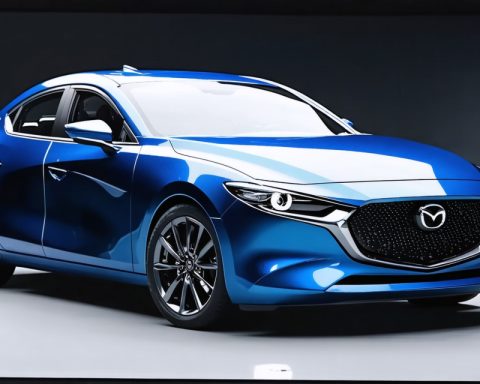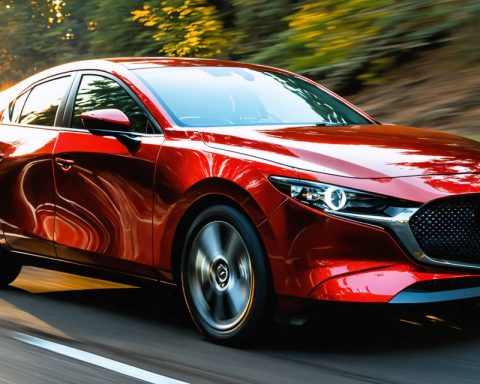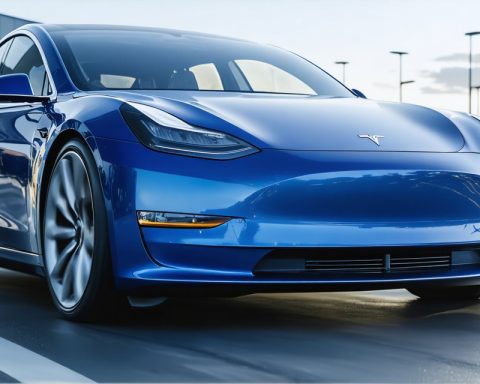- California’s highways now feature a dominant presence of electric vehicles (EVs).
- The state exceeded its 2025 goal of 1.4 million zero-emission vehicles (ZEVs) by reaching over 2.2 million EVs by the end of 2024.
- The Tesla Model Y became the world’s best-selling vehicle, surpassing traditional models like the Toyota Corolla.
- Key factors in this transformation include innovation, stringent regulations, government incentives, and robust infrastructure development.
- California aims for 100% of new car sales to be electric by 2035, setting a global precedent for climate action.
- This shift underscores the power of ambition combined with forward-thinking policies to drive impactful, sustainable change.
A striking transformation has unfolded across California’s sunlit highways, where electric vehicles (EVs), once deemed futuristic, now dominate the landscape. This movement, a beacon of hope against climate change, tells a story of ambition, innovation, and unforeseen success. But how did we get here?
Journey back to 2012, a year when the promise of electric cars whispered rather than roared. Visionaries from the California Legislature envisioned a future electrified by the hum of zero-emission vehicles (‘ZEVs’). Their report, “Electric Drive by ’25,” advocated for the mass adoption of EVs, wielding data from early market vehicles like the Nissan Leaf and the Chevrolet Volt. They predicted a significant surge, anticipating 1.4 million ZEVs would grace California roads by 2025. It seemed bold, audacious even, but hindsight reveals their foresight underestimated the tide of change.
By the close of 2024, California had surpassed its goal, boasting over 2.2 million electric vehicles. This metamorphosis echoed a broader narrative: the Tesla Model Y claimed the crown as the world’s best-selling vehicle, leaving once-dominant models like the Toyota Corolla in its green wake. California’s transformation serves as a testament to the power of forward-thinking policies paired with consumer enthusiasm for cleaner alternatives.
The secret sauce? Innovation and stringent regulations catalyzed the shift, with California’s relentless push for ZEV incorporation — a strategy mirrored globally as environmental awareness heightened. A mix of government incentives, robust infrastructure development, and burgeoning consumer demand amorphously evolved California’s automotive market.
What does this mean for the future? The state, an exemplar of climate-forward thinking, marches towards its next milestone: 100% of new car sales being electric by 2035, a target forging the blueprint for climate action worldwide.
Reflecting on this electric saga, we find a crucial lesson: ambition, grounded in policy and enlivened by innovation, bears transformative potential. While grappling with climate challenges requires urgency, California’s electrification stands as a monument to the impact of strategic, persistent efforts. The road ahead promises further evolution, but let’s savor this victory—a milestone on the green highway, lighting the path towards a sustainable future.
California’s Electric Highway: Surpassing Expectations and Shaping the Future
California has seen a remarkable transition from traditional vehicles to electric vehicles (EVs), turning its highways into avenues of change. The early 2010s only offered whispers of this transformation, but now the landscape is dominated by EVs. Let’s delve deeper into this phenomenon and answer some pressing questions.
How California Became an EV Leader
California’s success story with electric vehicles is rooted in a blend of innovation, consumer interest, and strong government policy. Here are some additional facets of this incredible transformation:
1. Government Incentives: The state implemented a series of financial incentives, including rebates and tax credits, which made EVs more appealing to consumers. Federal incentives also played a part by reducing the upfront cost of purchasing electric cars.
2. Infrastructure Development: California invested heavily in charging infrastructure, ensuring that EV owners have easy access to charging stations. This helped minimize the “range anxiety” that often deters potential switchers from traditional vehicles.
3. Automaker Commitment: Car manufacturers like Tesla, General Motors, and Ford have ramped up their production of electric models, offering more variety and affordability to consumers. Tesla, in particular, has played a pivotal role with its aggressive push into the EV market, continuously innovating and improving battery technology.
4. Stringent Emissions Policies: California enforced strict emissions laws that pushed automakers to increase their production of zero-emission vehicles. The state’s Air Resources Board has been at the forefront of implementing regulations that promote clean air standards.
Real-World Use Cases and Trends
Electric vehicles are not just a trend but a transformative shift in transportation. Here are some use cases where EVs are making a significant impact:
– Ride-Sharing Services: Companies like Uber and Lyft have pledged to make their platforms predominantly electric. This aligns with California’s eco-friendly policies, offering a direct pathway for high-mileage drivers to cut emissions.
– Commercial Fleets: Many businesses are transitioning their logistics operations to use electric delivery vans and trucks, which reduces their carbon footprint and often proves cost-effective over time.
Market Forecast and Predictions
As California sets its sights on 100% electric new car sales by 2035, several predictions and trends are emerging:
– Global Influence: California’s policies and successes have influenced other states and countries to adopt similar legislation, driving global EV adoption rates.
– Battery Technology Advancements: Continued innovation in battery technology will enhance EV performance, decrease costs, and extend vehicle range, making EVs more accessible to a broader audience.
– Second-Life Battery Applications: As more EVs reach the end of their lifecycle, second-life applications for EV batteries will become more prevalent, promoting sustainability and efficiency in energy storage solutions.
Challenges and Limitations
While the growth of EVs is promising, some challenges remain:
– Charging Infrastructure: Despite improvements, more charging stations are needed, especially in rural and underserved urban areas.
– Grid Capacity: California must ensure its electric grid can handle increased demand as more consumers switch to EVs.
– Affordability: Despite incentives, EVs can still be expensive for many buyers. Ongoing efforts to reduce costs are essential.
Quick Tips for EV Buyers
– Research Incentives: Before purchasing an EV, explore all available state and federal incentives to reduce costs.
– Charging Location: Consider your access to charging stations at home, work, and in your community.
– Total Cost of Ownership: Evaluate long-term savings on maintenance and fuel when considering an EV investment.
Conclusion
California’s success in scaling electric vehicle adoption is a beacon for sustainable transportation. By emphasizing innovation, infrastructure, and policy, the state sets an example of what is possible when ambition meets action. As the world moves towards greener solutions, the story of California’s electric highway provides valuable insights and lessons for future endeavors.
For more information, visit the California Government’s official website.












